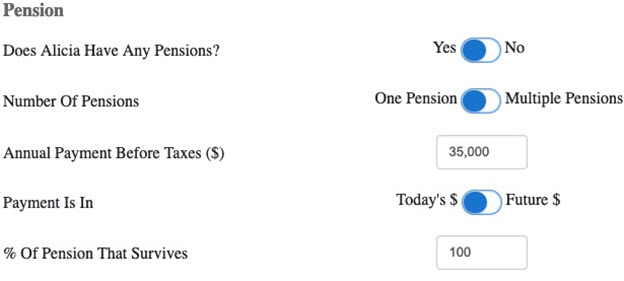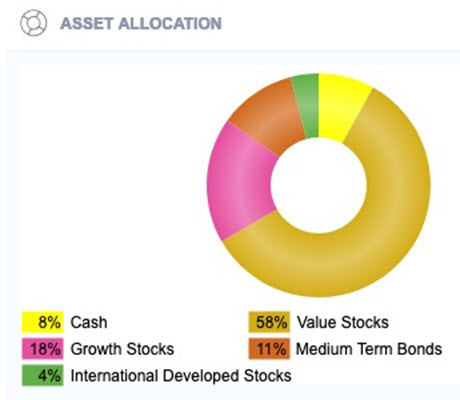Key Points
- The 100-minus-your-age rule is a shortcut for figuring out what your asset allocation should look like.
- However, it is just that--a shortcut--and should only be considered a starting point.
- Determining what your asset allocation really should look like depends on a lot of different factors that this shortcut can't tell you.
Do you know about the 100-minus-your-age rule of investing?
Before we get to that, let's take a step back. You have surely heard that, as you get older, you're supposed to hold less risky assets than when you're younger. The idea here is that you don't want to be caught in a bear market right when you need the money. A bear market could lead you to sell stocks at exactly the wrong time: When your portfolio is in the red. That's what's known as permanent capital impairment.
So as with so many other complicated issues in personal finance and investing, a shortcut was developed that addresses this common knowledge. It says that your stock allocation should equal 100 minus the age you are today.
Taking Shortcuts
There's plenty positive to be said for shortcuts like this. It's just that, well, they're shortcuts. They don't incorporate much nuance, and by definition can't take into account exceptions to the rule.
And in this case there are plenty of exceptions.
For one thing, the rule was created when life expectancy in the US was a lot lower. So if you're going to use the rule, maybe add 10 or 20 years to it.
There's a lot more wrong with it, however. "It depends" looms large over the rule, as it does over so many other personal finance questions.
What You Need To Live On
For example, your actual asset allocation should depend on your spending needs as they relate to your assets or income sources. That might seem pretty obvious, but here's what we mean.
Let's say you were really good about saving and investing in your working years and have amassed quite a bit of money. You're able to start drawing on your IRA without penalty once you turn 59 1/2, and your calculations indicate you should be able to easily cover spending with your IRA starting around that time.
In a case like that, the Rule of 100 is more of a suggestion at best. If the income-generating power of your assets will far outlive you, you may not need to worry much about adhering to the rule. In fact, it could lead you to be far more conservative than you need to be, shorting you (or your heirs) the returns you could reap.
Where the Money Comes From
Or maybe you have solid sources of income, either outside the stock market, like via Social Security or a pension, or via the market, like from dividends that you are confident will be maintained and even grow.
In the former case, being aggressive with your asset allocation should not be cause for worry. If your needs are largely met by those non-market sources, you can afford some market volatility--and the superior returns a more aggressive allocation normally provides.
You can sign up for a free trial of WealthTrace to home in on your optimal asset allocation by running what-if scenarios on your retirement plan.

Use WealthTrace to figure out if you have enough retirement income and what you need to do in order to retire stress free.
In the latter case, by definition you'll have to be invested in the market in order to reap the dividends.
Say you're 70, need $80,000 a year to live on, and have $1,000,000 in investments. The Rule of 100 says you should be in 30% equities and 70% bonds.

Let's further assume that Social Security covers $20,000 of your spending needs. That means you have to come up with an additional $60,000 annually.
With a 30/70 split like the rule would recommend, only $300,000 will be invested in the stock market (with the remaining amount in bonds). Covering that $60K would require a 20% dividend yield on the stock portion. And that would be impossible to achieve.
We're oversimplifying here, of course. In real life, you might draw down on some principal to cover your expenses in a situation like this. Also, in recent months, fixed income yields have finally come around to the point where they can give dividend stocks a run for their money, so to speak. But the point remains: A 30/70 split probably would not make a lot of sense here.
Risk(y) Business
Last but definitely not least, an investor's risk tolerance also has to be considered in any decision about asset allocation--and at any age.
Risk tolerance as it relates to asset allocation runs the gamut. On one end of the spectrum, there are people who want nothing to do with the stock market. Maybe they found out at a young age that big swings in the market literally keep them up at night, or make them more worried than is healthy. The logic that works with most young people--just keep dollar-cost averaging in when things get rough and you'll eventually come out ahead--doesn't work for them. Such people might just stick with assets that don't even beat inflation, like cash.

Link your accounts and view your overall asset allocation in WealthTrace.
Conversely, it's not uncommon to find investors who love the stock market, even later in life. They've grown accustomed to its gyrations and are willing to adjust their lifestyle if necessary (by spending less, mainly) during the downturns so that they can reap the rewards when things turn around. The risks are simply worth it to such investors.
Rules Are Made To Be Broken--Sometimes
If you're not all that interested in personal finance, guidelines like the Rule of 100 can serve as ways to get you at least closer to best practices than you might otherwise get. But it's going to be a lot better to test out your thoughts and theories in a software program like WealthTrace, which can give you customized results based on your unique situation.
WealthTrace empowers you to run your own comprehensive retirement plan and figure out if you are ready for retirement. Sign up for a free trial of WealthTrace to get started.